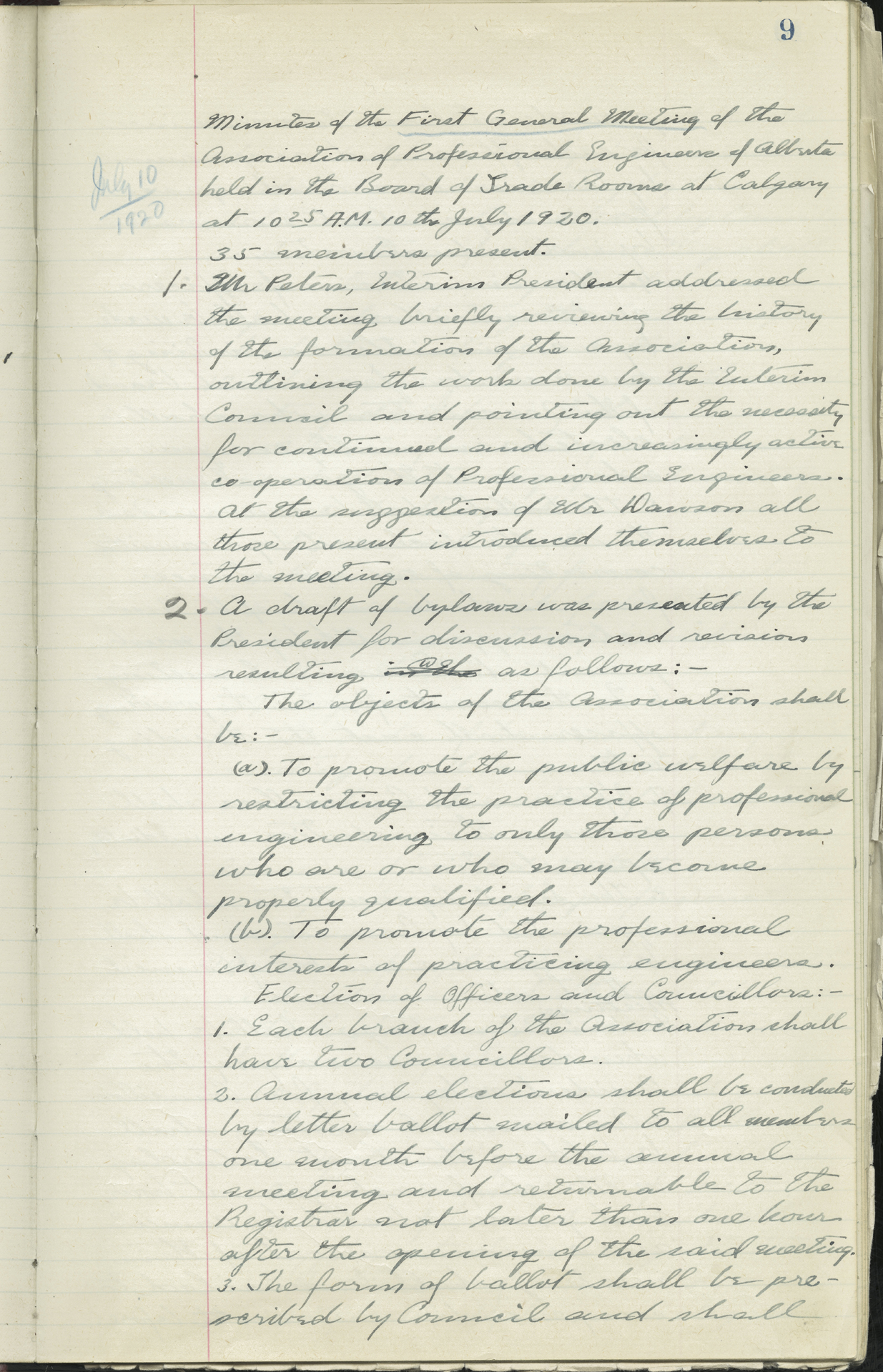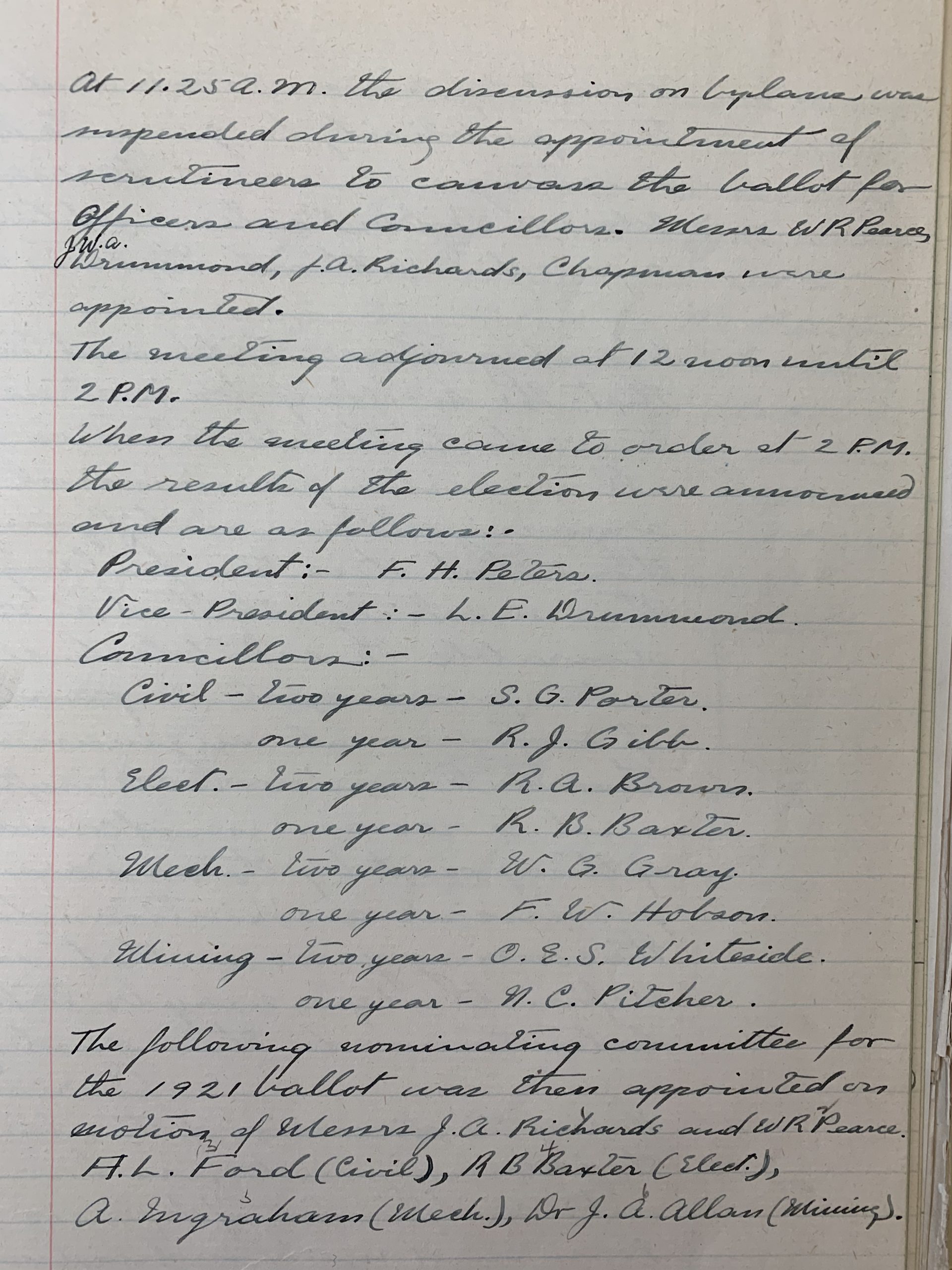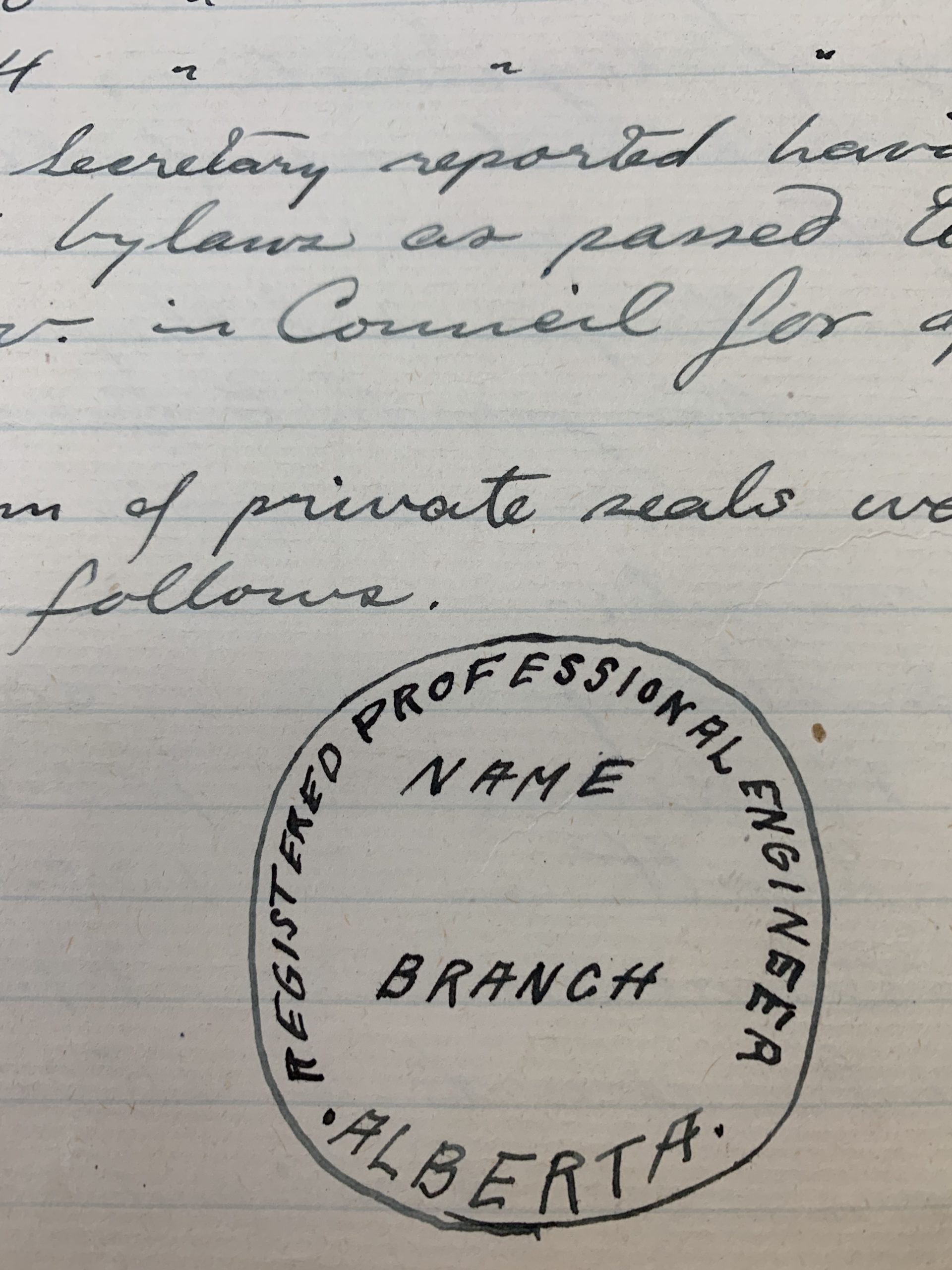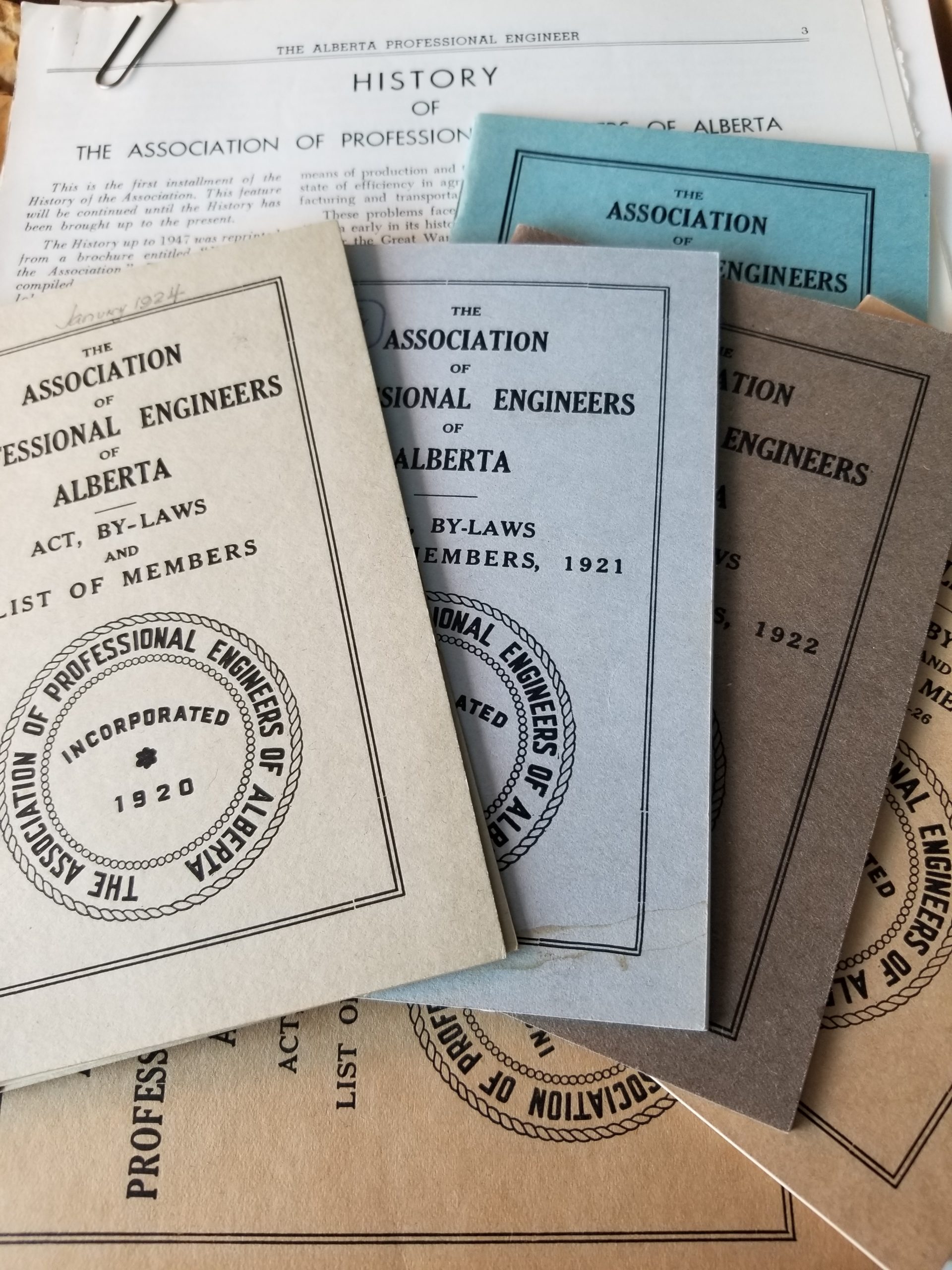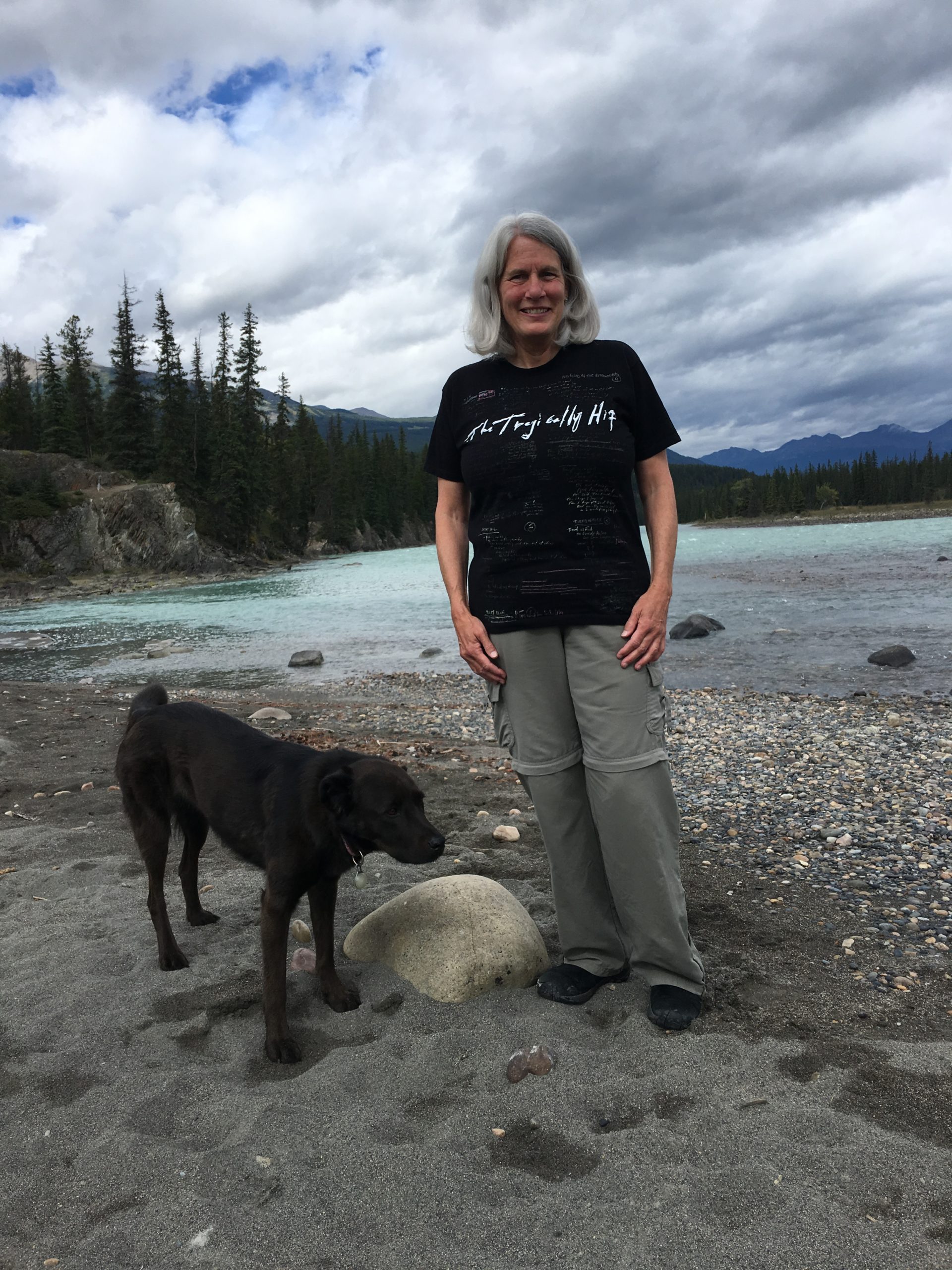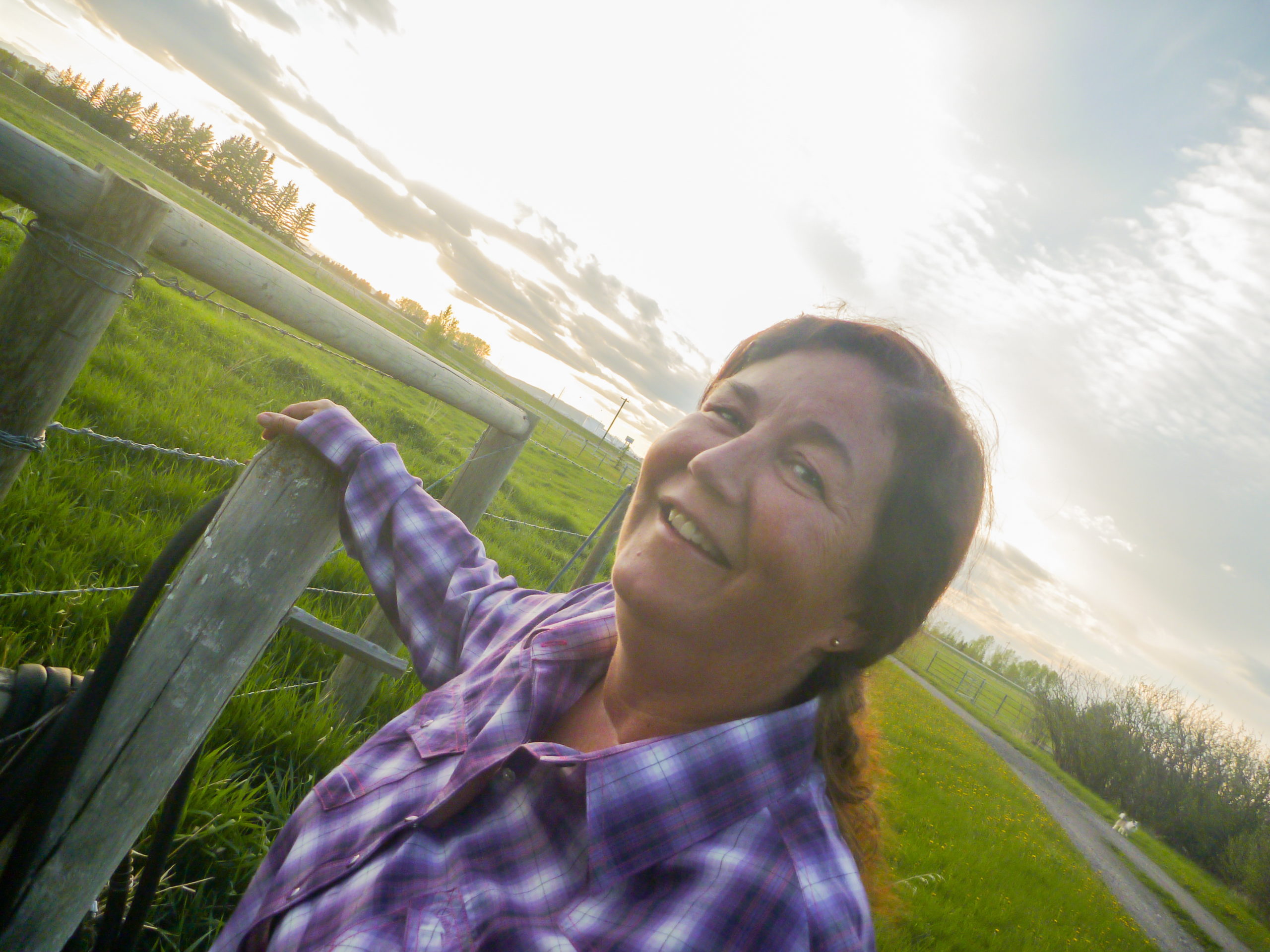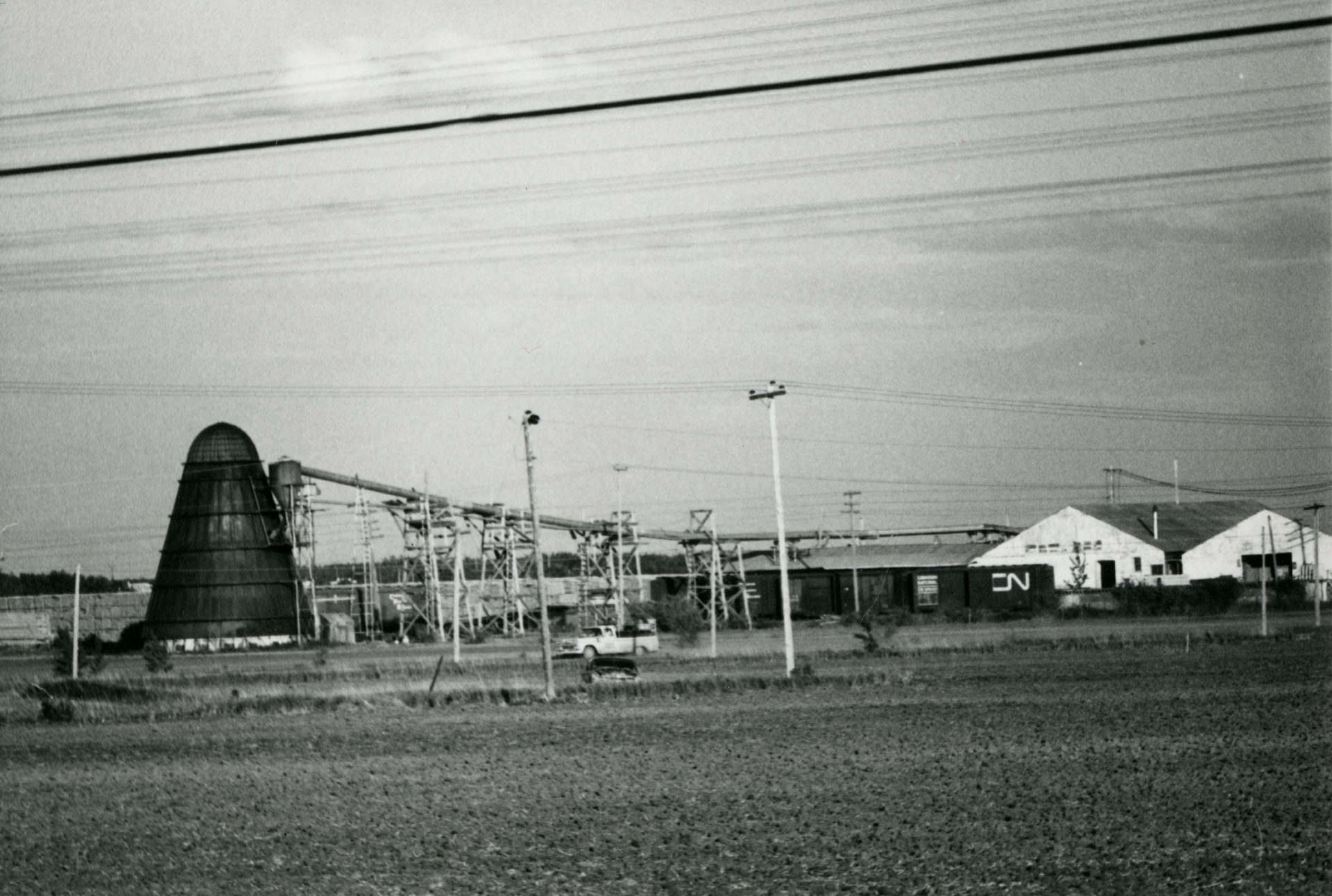Minutes of First Annual General Meeting - July 10, 1920. Provincial Archives
APEGA is Founded – Public Welfare Gets an Engineering Ally
Much has changed for APEGA over the past century, but our purpose is the same as it‘s always been. Today, we state it this way in our vision statement: building a safe and resilient Alberta.
The association‘s founders would no doubt approve.
Back in their time, towns and cities across the province were rapidly expanding. So, too, were industrial developments. Major infrastructure projects—everything from water and electrical plants to dams, bridges, roads, and railways—were in full swing.
A group of forward-thinking engineers were concerned that lax regulation of their profession was endangering the public.
They proposed to the Government of Alberta that engineers—whose ranks in those days included geoscientists—regulate themselves to safeguard public welfare.
The province agreed.
On April 10, 1920, theEngineering Profession Act was proclaimed in the legislature and the Association of Professional Engineers of Alberta was formed.
The Act outlined the education and experience qualifications required by members, defined the practice of engineering, and enabled members to elect a governing Council made up of volunteers from within the membership. A protected title—registered professional engineer—was created to help identify qualified members to the public.
By July 10, when the association‘s first general meeting was held, 106 members had registered in four engineering branches—69 in civil, 20 in mining, 10 in electrical, and seven in mechanical.
The 35 members on hand for the meeting approved the association‘s draft bylaws and elected their first Council, which included 10 members from across Alberta. Among their home communities were Coleman, Calgary, Edmonton, Lethbridge, and Medicine Hat.
Frederick Peters was a civil engineer from Calgary and long-time advocate of self-regulation. He was elected the association‘s first President. Helping him lead Council was Leonard Drummond, a mining engineer from Edmonton and the association‘s Vice-President.
Minutes from the meeting recorded the association‘s key purpose: To promote the public welfare by restricting the practice of professional engineering to only those persons who are or who may become properly qualified.
Ten years later, another significant milestone in the association‘s history was reached.
Government revisions to theEngineering Profession Act in 1930 further enhanced public safety, making it mandatory for anyone practising engineering in Alberta to be licenced by the association. Previously, the legislation had only prohibited non-members from using the registered professional engineer title.
The association‘s first decade was a productive one, laying a solid foundation for the future.
The following decades brought continued progress, including new professional titles for geoscientists, an expanded mandate, a new name, and then another new name—the Association of Professional Engineers and Geoscientists of Alberta, or APEGA.
Today, at almost 75,000 members strong, APEGA is the largest organization of self-regulated professionals in Western Canada. Along with our members, we have a shared commitment to public safety and well-being through the self-regulation of the professions.
We and our members, like our founders, are committed to regulatory excellence. To adapting. To learning. To being leaders.
To moving forward, together, into our next century of service.
KEY APEGA MILESTONES FROM 1920 TO 2020
1920 – The Engineering Profession Act is passed in the legislature and the Association of Professional Engineers of Alberta (APEA) is formed. Its headquarters is in Edmonton
1930 – The Act is updated by the provincial government, allowing APEA total regulation of the practice of professional engineering in Alberta
1946 – APEA begins using the P.Eng. abbreviation for professional engineers
1952 – Membership reaches 1,000
1957 – APEA opens a second office, in Calgary
1960 – The Engineering and Related Professions Act is passed, allowing for separate registration and designation of engineers, geologists, and geophysicists
1968 – Corporations that practise engineering in Alberta must now obtain a Permit to Practice from the Association
1968 – Membership reaches 5,000
1969 – APEA becomes APEGGA, the Association of Professional Engineers, Geologists, and Geophysicists of Alberta
1977 – Membership reaches 10,000
1988 – Membership reaches 25,000
1991 – APEGGA holds its first annual conference, including professional development seminars, the Annual General Meeting, and the Summit Awards
1997 – To better serve the public interest, APEGA introduces Canada‘s first mandatory continuing professional development program for engineers and geoscientists
1998 – Membership reaches 30,000
1999 – APEGA launches its first website
2007 – Membership reaches 50,000
2009 – APEGGA approves a new professional geoscientist (P.Geo.) designation, combining the professional geologist and professional geophysicist designations
2011 – The P.Geo. designation is officially proclaimed in the Alberta legislature
2012 – APEGGA becomes APEGA, reflecting combined designation of professional geoscientists; APEGA membership reaches 70,000
2014 – A comprehensive legislative review begins, taking a deep dive into APEGA‘s governing legislation and how it can be modernized
2020 – APEGA celebrates 100 years of self-regulatory excellence in Alberta
